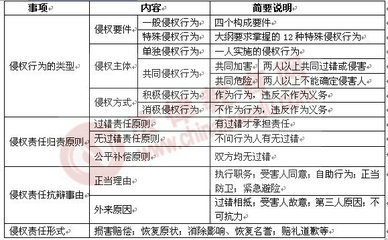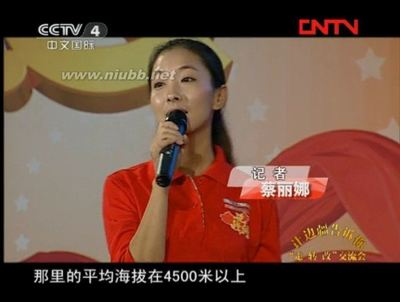New tort law setsout rules for environmental liability
On 26December 2009, the National People’s Congress passed the PRCTort Law, which will take effect on 1 July 2010. Chapter eightof the Tort Law is entitled Liability for Environmental Pollution,and specifically addresses liability for environmentally-relatedtort.
新侵权法规定环境责任
2009年12月26日,全国人民代表大会通过《中华人民共和国侵权法》,自2010年7月1日起实施。《侵权法》第八章题为“环境污染责任”,专门规定了与环境相关的侵权责任。
Strict liability for environmentalpollution
Article 65 of theTort Law provides that “where any damage is caused by environmentalpollution, the polluter shall bear tortious liability.” Thus,environmental tortious liability can be triggered if all of thefollowing three elements exist: (i) environmental pollution occurs,(ii) persons or entities other than the polluter suffer an injury,and (iii) a causal link exists between the environmental pollutionand the injury.
Article 65 alsoclarifies that environmental tortious liability is subject tostrict liability. This broadens the concept of liability inenvironmental torts, in that it does not require proof of anysubjective fault of the polluter.
环境污染的严格责任
《侵权法》第65条规定:“因污染环境造成损害的,污染者应当承担侵权责任。”据此,如同时符合以下三个条件,则应承担环境侵权责任:(1)发生环境污染,(2)污染者之外的个人或单位遭受损害,以及(3)环境污染与损害之间存在因果关系。
第65条也指明环境侵权责任适用严格责任原则。该规定加大了环境侵权责任的范围,因为这不要求证明污染者存在主观过错。
Polluter bears the burden ofproof
Article 66 of theTort law provides that “in case of a dispute arising fromenvironmental pollution, the polluter shall bear the burden ofproof regarding the exemption or mitigation of liability, as wellas the lack of causal linkage between its behaviour and thedamage”. This is a reversal of the usual burden of proof, whichwould otherwise lie with the injured plaintiff – the party allegingthe pollution.
According to thisprovision, an injured plaintiff only needs to provide primafacie evidence about the likelihood that the polluter’s actioncaused the damage, and the polluter is required to provide evidenceto refute that causal linkage. The alleged polluter can do so byproving either that PRC laws exempt or mitigate liability, or thatthere is no causal linkage between its action and thedamage.
Thisreversal of the burden of proof in cases regarding environmentaldamage is not new in PRC law, being similar to Article 4(3) of theSupreme People's Court Evidence in Civil Actions SeveralRegulations, issued by the Supreme People's Court and effectivefrom 1 April 2002.
污染者承担举证责任
《侵权法》第66条规定:“因污染环境发生纠纷,污染者应当就法律规定的不承担责任或者减轻责任的情形及其行为与损害之间不存在因果关系承担举证责任。”该规定与一般的举证责任规则相反,根据一般的举证责任规则,应由遭受损害的原告(即主张发生污染的当事人)承担举证责任。
根据该规定,任何遭受损害的原告仅需提供关于污染者行为导致损害的初步证据,污染者则需要提供否定因果关系的证据。被指控的污染者可以提供证据证明中国法律规定的不承担责任或者减轻责任的情形或其行为与损害之间不存在因果关系。
在环境损害案件中实行举证责任倒置并非中国法律中的创新制度,在最高人民法院发布的自2002年4月1日起施行的《最高人民法院关于民事诉讼证据的若干规定》第4条第(三)项中已有类似规定。
Exempt or mitigatedliability
According toArticle 26 of the Tort Law, a polluter may prove the followingsituations in order to exempt or mitigate its tortiousliabilities:
i)the injured party has contributory fault that also caused thedamage, and therefore the polluter can mitigate itsliability;
ii)the injured party intentionally caused the damage, and thereforethe polluter can be exempted from its liability;
iii)a third party caused the damage, and therefore that third partyshall bear the tortious liability (in this scenario the injuredparty can claim damages from the polluter first, and the pollutercan then claim compensation from the third party at fault. Pleaserefer to the more detailed discussion below); or
iv)a force majeure event caused the damage, and therefore the pollutercan be exempted from its liability unless otherwise regulated bylaw.
免除或者减轻责任
根据《侵权法》第26条,污染者可以证明以下情形以免除或减轻其侵权责任:
(1)受害人对损害的发生也有过错的,可以减轻污染者的责任。
(2)损害是因受害人故意造成的,污染者不承担责任。
(3)损害是因第三人造成的,第三人应当承担侵权责任(此时,受害人可以先向污染者索赔,其后污染者可以向存在过错的第三人索赔。有关详情,请参阅下文);或
(4)除法律另有规定外,因不可抗力造成损害的,污染者不承担责任。
Joint liability ofpolluters

Incircumstances where there is more than one polluter, the Tort Lawprovides for joint liability. Article 67 of the Tort Law providesthat “where there are two or more polluters, the liabilityproportion shall be determined based on the type of the pollutants,the amount of the emission and other factors”.
Article 67addresses the apportionment of liability among joint polluters ifnone of them meets the burden under Article 66 to disprove a causallink between its actions and the environmental damage in question.In such a case, the polluters will be held jointly liable, and theapportionment of liability will largely depend on what type andamount of pollutants were emitted by each respectivepolluter.
Although Article 67establishes that the apportionment of joint liability depends onfactors including the type and amount of pollutants emitted, theTort Law does not provide detailed standards or specifications onhow to use these factors when apportioning joint liability inpractice. The issue may be further confused because the listedfactors are not exhaustive, which would allow other unknown factorsto be considered in an apportionment scenario. Therefore, it maycurrently be difficult for a polluter to know with any certaintywhat proportion of damages it will be responsible for in a jointpollution scenario.
多位污染者的共同责任
就两个以上污染者的情形,《侵权法》规定了共同责任。《侵权法》第67条规定:“两个以上污染者污染环境,污染者承担责任的大小,根据污染物的种类、排放量等因素确定。”
第67条规定,如果共同污染者均不能根据第66条证明其行为与环境损害之间不存在因果关系,则应分担侵权责任。此种情形下,污染者应承担共同责任,责任的分担主要根据各污染者排放的污染物的种类和排放量而定。
尽管第67条规定共同责任的分担根据污染物的种类和排放量等因素确定,但侵权法并未规定在司法实务中分摊共同责任之时如何运用上述因素的详细标准或规范。该问题可能引发进一步的困惑,因为所列因素并未穷尽所有情形,这可能导致在分担责任的案件中考虑其他未知因素。因此,在共同污染案件中,污染者目前可能难以确切地知道其应承担的损害赔偿金的比例。
Joint and severalliability with a third party at fault
Article 68 of theTort Law provides that “where any damage is caused by environmentalpollution which is attributable to a third party, the injured partymay seek compensation from either the polluter or the third party.The polluter may, after paying the compensation, claim the samefrom the third party.”
According to thisprovision, a polluter shall bear joint and several liability with athird party even if the damages caused by pollution are due to thefault of such third party.
Article 68indirectly reiterates the “strict liability” principle in the T ortLaw, so as to offer better protection to injured parties. It grantssignificant protection to victims of environmental pollution, andincreases liability for polluters.
Thisprovision increases protection for a victim of environmentalpollution because the victim will not need to identify the precisecause of the environmental pollution. The provision also increasesliability for a polluter because the polluter could be liable forcompensating victims even though it is not at fault. The result ofthis enhanced protection and liability is that polluters may needto take more stringent and prudent measures to prevent or reducenot only their own environmental pollution, but also that of thirdparties.
与存在过错的第三方一起承担连带责任
《侵权法》第68条规定:“因第三人的过错污染环境造成损害的,被侵权人可以向污染者请求赔偿,也可以向第三人请求赔偿。污染者赔偿后,有权向第三人追偿。”
根据该规定,即使污染损害是因第三方的过错引起的,污染者也应与第三方承担连带责任。
第68条间接重申了侵权法的“严格责任原则”,以便更有利地保护受害人。该规定为环境污染的受害人提供了重要保护,并加重了污染者的责任。
该规定加大了对环境污染受害人的保护力度,因为受害人无需确定环境污染的准确原因。该规定也加重了污染者的责任,因为污染者即使没有过错,也可能需要向受害人承担赔偿责任。加大保护力度和责任的结果是污染者可能需要采取更严格和谨慎的措施,不仅防止或减少其自己造成的环境污染,还需要防止或减轻第三方引起的环境污染。
 爱华网
爱华网



